Sensor Sweep: Ubisoft, James Bond, Matt Helm, Elfquest
Monday , 30, September 2024 Sensor Sweep Leave a commentOld Radio (Purple Girasol): Presenting, for your listening pleasure, “Murder by a Corpse“. A Halloween episode a month early.
New (With Both Hands): There are now a number of contemporary short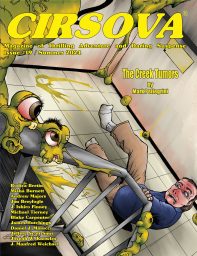 fiction magazines publishing sci fi, fantasy, and weird tales, and Cirsova may be pre-eminent among them. While sales of these little magazines are far below what similar publications managed in the pulp heyday, I love them for keeping great storytelling alive.
fiction magazines publishing sci fi, fantasy, and weird tales, and Cirsova may be pre-eminent among them. While sales of these little magazines are far below what similar publications managed in the pulp heyday, I love them for keeping great storytelling alive.
 Fiction (Vintage Pop Fictions): The Ambushers, published in 1963, was the sixth of Donald Hamilton’s Matt Helm spy thrillers. Donald Hamilton (1916-2006) was an American writer who worked in various genres but is best known for his spy novels. The Matt Helm books bear no resemblance to the Matt Helm movies (which are great fun in their own way). Matt Helm is a US Government assassin.
Fiction (Vintage Pop Fictions): The Ambushers, published in 1963, was the sixth of Donald Hamilton’s Matt Helm spy thrillers. Donald Hamilton (1916-2006) was an American writer who worked in various genres but is best known for his spy novels. The Matt Helm books bear no resemblance to the Matt Helm movies (which are great fun in their own way). Matt Helm is a US Government assassin.
Forthcoming (Pulpfest): Though we’re nearly a year away from putting the next issue of The Pulpster into your hands, we’re beginning to line up articles for the 34th issue of our magazine. Are you interested in contributing? The Pulpster 34 will debut next August at PulpFest 2025.
Fiction (Murray Ewing): I was reminded of Jane Gaskell’s Atlan Saga —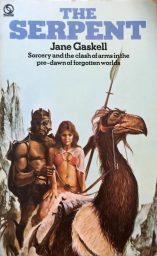 another series I remember being in plenty of bookshops at the height of my fantasy-reading phase, in the mid-80s — when I came across a 20-minute filmed interview with her at the BFI’s site, in which she’s asked about late-1960s youth, which she was young enough to have insight into, but just that little bit older than, so presumably had some objectivity about.
another series I remember being in plenty of bookshops at the height of my fantasy-reading phase, in the mid-80s — when I came across a 20-minute filmed interview with her at the BFI’s site, in which she’s asked about late-1960s youth, which she was young enough to have insight into, but just that little bit older than, so presumably had some objectivity about.
Gaming (Side Scrollers): Razorfist On Ubisoft’s Woke Demise
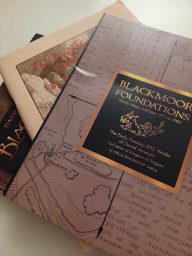 D&D (Blackmoore Mystara): My copy of Blackmoor Foundations finally arrived. I decided I wanted to get this one from Amazon, but even though I ordered it immediately after it was announced there, it took quite some time for them to get the stock to send out to customers. Once shipped, it got here really fast so that is nice. And guess what, just in time for Blackmoor Week! I will be looking over this one over the next few days. Sadly, the cover got a bit bent as you can see in the photo, but oh well.
D&D (Blackmoore Mystara): My copy of Blackmoor Foundations finally arrived. I decided I wanted to get this one from Amazon, but even though I ordered it immediately after it was announced there, it took quite some time for them to get the stock to send out to customers. Once shipped, it got here really fast so that is nice. And guess what, just in time for Blackmoor Week! I will be looking over this one over the next few days. Sadly, the cover got a bit bent as you can see in the photo, but oh well.
Edgar Rice Burroughs (Reactor Mag): I decided to push on and read books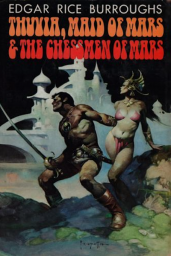 four and five of the series, Thuvia, Maid of Mars and The Chessmen of Mars. These books bring Carter’s son and daughter to center stage, but still offer the same entertaining mix of exciting pulp adventures and strange aliens that made the preceding novels so enjoyable.
four and five of the series, Thuvia, Maid of Mars and The Chessmen of Mars. These books bring Carter’s son and daughter to center stage, but still offer the same entertaining mix of exciting pulp adventures and strange aliens that made the preceding novels so enjoyable.
Authors (Real Book Spy): On Wednesday, September 18th, news broke that legendary author Nelson DeMille, best known for writing the John Corey series and other novels, including Plum Island, The Charm School, and most recently, Blood Lines (which he co-authored with his son, Alex DeMille), had died following a battle with throat cancer. He was 81 years old.
Science Fiction (Feral Historian): I’ve never known anyone who said that Drakon was their favorite Draka book, but it does have some interesting elements both on its own and in relation to the earlier novels. Let’s have a look back at Gwen and Ken’s old-timey ’90s adventure.
Tolkien (Imaginative Conservative): In 1926, when merely a thirty-four year old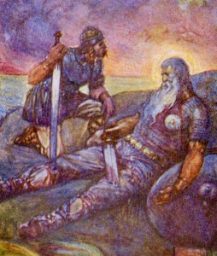 academic, J.R.R. Tolkien translated the greatest of medieval epics, Beowulf, into a prose story, line for line and plot point for plot point. While lacking the flair of poetic translations such as that by Seamus Haney in the year 2000, Tolkien’s Beowulf has style and class, consistency and depth.
academic, J.R.R. Tolkien translated the greatest of medieval epics, Beowulf, into a prose story, line for line and plot point for plot point. While lacking the flair of poetic translations such as that by Seamus Haney in the year 2000, Tolkien’s Beowulf has style and class, consistency and depth.
Table Top (Leviathan War): I thought it might be worth posting a bit about what Leviathan is and why it attracted me back in the day and why it still holds such a fascination for me.
 Beer (File 770): Pliny the Elder is a legendary beer from the Russian River Brewing Company in Santa Rosa, California, and if stores put it out, someone would invariably come along and buy the entire lot, which produced a lot of unhappy customers.
Beer (File 770): Pliny the Elder is a legendary beer from the Russian River Brewing Company in Santa Rosa, California, and if stores put it out, someone would invariably come along and buy the entire lot, which produced a lot of unhappy customers.
Robert E. Howard (Jim Zub): Continuing my Conan reread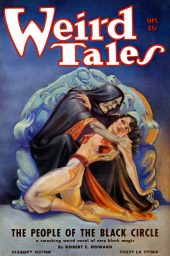 for Cimmerian September, the eleventh published Conan story is People of the Black Circle, which originally serialized across three issues of Weird Tales magazine, from September to November 1934.
for Cimmerian September, the eleventh published Conan story is People of the Black Circle, which originally serialized across three issues of Weird Tales magazine, from September to November 1934.
Weird Tales (E-bay): RARE! Complete Set of Weird Tales – Pulp
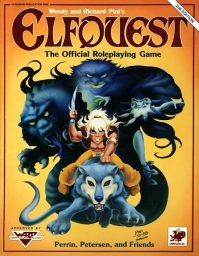 RPG (Grognardia): I’ve been an admirer of Chaosium boxed sets for a long time and consider many of them to be among the best RPG products ever released. That’s why I was very quick to snap up the 40th anniversary reprint of Call of Cthulhu the company announced in 2021. Building on that success, Chaosium announced another re-release of a classic Basic Role-Playing-derived game, ElfQuest.
RPG (Grognardia): I’ve been an admirer of Chaosium boxed sets for a long time and consider many of them to be among the best RPG products ever released. That’s why I was very quick to snap up the 40th anniversary reprint of Call of Cthulhu the company announced in 2021. Building on that success, Chaosium announced another re-release of a classic Basic Role-Playing-derived game, ElfQuest.
Star Trek (Red Shirts Always Die): When Star Trek: The Original Series’ first pilot, “The Cage,” was shot down by NBC, there was no guarantee the series was going to get off the ground even though it was given a second chance to prove itself with a new pilot. Jeffrey Hunter, the actor who played Captain Christopher Pike in the original pilot, elected not to return for another shot at the show so a new captain had to be found, and William Shatner was cast.
RPG (Sacnoth’s Scriptorium): So far as I can tell, I.C.E. released ten books in four series: Tolkien Quest (two books), Middle-earth Quest (four books), Narnia Solo Games (one book), and Sherlock Holmes Solo Mysteries (three books). It started as Tolkien Quest, then quickly changed to Middle-earth Quest –indeed one of the books advertised as part of the T.Q. series had been re-labeled to be MeQ books instead by the time it came out.
Ghost Stories (Wormwoodiana): The anthology After Midnight Stories (1985) is subtitled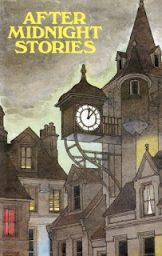 “A Kimber Ghost Book.” It was published by William Kimber of London, and edited by Amy Myers, then working at the publishing house–she would later become well-known as a mystery writer.
“A Kimber Ghost Book.” It was published by William Kimber of London, and edited by Amy Myers, then working at the publishing house–she would later become well-known as a mystery writer.
Fantasy (Ken Lizzi): Part II of my review of A Treasury of Fantasy covers only one entry, but it accounts for a good quarter of the length of the anthology. Part I can be found here. The selection in question is George MacDonald’s Phantastes. A Faerie Romance for Men and Women.
The first chapter of Phantastes reminds me of Lilith, his later, perhaps more mature work that I’ve covered previously.
Audio (Horror Babble): “Worms of the Earth” by Robert E. Howard
Horror (Classic Horror Blog): In my estimation, “Ultor De Lacy” is one of the finest, most enigmatic, and most terrifying of Le Fanu’s short fiction, standing comfortably alongside “Schalken the Painter” and “Strange Disturbances in Aungier Street.” It is with sadness, then, that in my research I noted that it accrued very little critical attention indeed
Weird Tales (Tellers of Weird Tales): I have been writing about anniversaries of Weird Tales and observances of those anniversaries within the pages of the magazine, as well as in other publications. Here is a list of my articles about Weird Tales in its sixties and seventies.
Pulp (DMR Books): While reading The Best of Jules De Grandin by Seabury Quinn, I kept thinking, “How on earth was this guy more popular than Robert E. Howard or H. P. Lovecraft?”
kept thinking, “How on earth was this guy more popular than Robert E. Howard or H. P. Lovecraft?”
The stories in The Best are mediocre. Now, when I say mediocre, I mean mediocre. As in middling. Not bad.
 Cinema (CBR): As tall as Vader’s shadow looms, however, he’s not the only great villain that Jones brought to life. Conan the Barbarian – John Milius’ 1982 adaptation of the pulp stories of writer Robert E. Howard – owes a great deal to Jones’s performance as sorcerer and cult leader Thulsa Doom. The film succeeded due to the happy confluence of numerous elements, most notably the decision to cast Arnold Schwarzenegger in the role that made him a star. Without Jones and Thulsa Doom, however, it might not have succeeded at all.
Cinema (CBR): As tall as Vader’s shadow looms, however, he’s not the only great villain that Jones brought to life. Conan the Barbarian – John Milius’ 1982 adaptation of the pulp stories of writer Robert E. Howard – owes a great deal to Jones’s performance as sorcerer and cult leader Thulsa Doom. The film succeeded due to the happy confluence of numerous elements, most notably the decision to cast Arnold Schwarzenegger in the role that made him a star. Without Jones and Thulsa Doom, however, it might not have succeeded at all.
Cthulhu Mythos (Swordslore): Even before August Derleth coined the term “Cthulhu Mythos”, Lovecraft and his contemporaries had established their literary universe subtly throughout their publications in the Weird Tales magazine and other publications during the “Golden Age” of pulp fiction. They referenced and expanded upon one another’s inventions.
Raymond Chandler (Archive.org): Philip Marlowe – The BBC Radio Drama Collection
Authors (Adventures Fantastic): Today, September 12, is the birthday of Charles L. Grant (1942-2006). He passed away on September 15, just three days after sixty-fourth birthday. I never got the chance to meet him, but he is to my mind one of the central figures of the second half of the Twentieth Century.
 Fiction (Vintage Pop Fictions): Victor Rousseau (1879-1960) was an English British writer who wrote science fiction and other assorted pulp fiction works. His lost world novel Eric of the Strong Heart was serialised in four parts in Railroad Man’s Magazine in November and December 1918.
Fiction (Vintage Pop Fictions): Victor Rousseau (1879-1960) was an English British writer who wrote science fiction and other assorted pulp fiction works. His lost world novel Eric of the Strong Heart was serialised in four parts in Railroad Man’s Magazine in November and December 1918.
Weird Fiction (Counter Punch): The Old English “wyrd,” from which the contemporary usage is derived, in fact was a noun corresponding to fate or destiny. “Wyrd” signified the forces directing the course of human affairs – an understanding reflected, for example, by Shakespeare’s three prophetic “weird sisters” in “Macbeth.” An individual’s “weird” was their fate, while use of the term weird as an adjective connoted the supernatural power to manipulate human destiny.
James Bond (Rip Jagger Dojo): On Her Majesty’s Secret Service pits Bond against his arch-enemy Blofeld for the second time, as tries to stop the fiend from trying to poison the livestock and crops of England. It’s a pretty out-sized plot and the action is pretty extreme. Along for the ride is the woman who becomes the love of Bond’s life and briefly his wife.
History (History Dose): Haida: Indigenous “Vikings” of Canada.
James Bond (James Bond First Editions): The fact Bond is a cultural icon, and part of what’s quintessentially British are just two other yardsticks one could fall back on. But I’m NOT talking about the films. I’m talking about the books, and I’m currently questioning whether we’ve reached an inflection point where whether the future of the books is now inextricably linked to future the films.
Paleontology (Extinct Zoo): You’ve probably heard that the country down under, Aka Australia, is the land of nope. Well, its kind of true, as Australia does have way more lethal animals that the average country does, but in true Australian fashion, it turns out that in the past it was 100x worse.
Hollywood (Nerdrotic): HAIL THE FELLOWSHIP! Corporate Hollywood is DYING, and That’s a Good Thing.
Art (Aureus Press): The Baroque epoch (1584-1780) was an era of lush and evocative architecture and interiors, an era when art styles and trends were all-encompassing and woven into the fabric of daily life, from music to clothing to monuments. Descriptively you might define the Baroque style as a sensuous, organic, and highly decorative opulence, with a foundation in spiritual positivity.
evocative architecture and interiors, an era when art styles and trends were all-encompassing and woven into the fabric of daily life, from music to clothing to monuments. Descriptively you might define the Baroque style as a sensuous, organic, and highly decorative opulence, with a foundation in spiritual positivity.
History (James LaFond): Of the many books on Tecumseh available at the used book store next to the motel in San Jose, this was the thinnest and had the most readable type. The style is pleasing and the narration excellent. This review is largely a look at incidental evidence of tribal ethnicity within the text.
Please give us your valuable comment